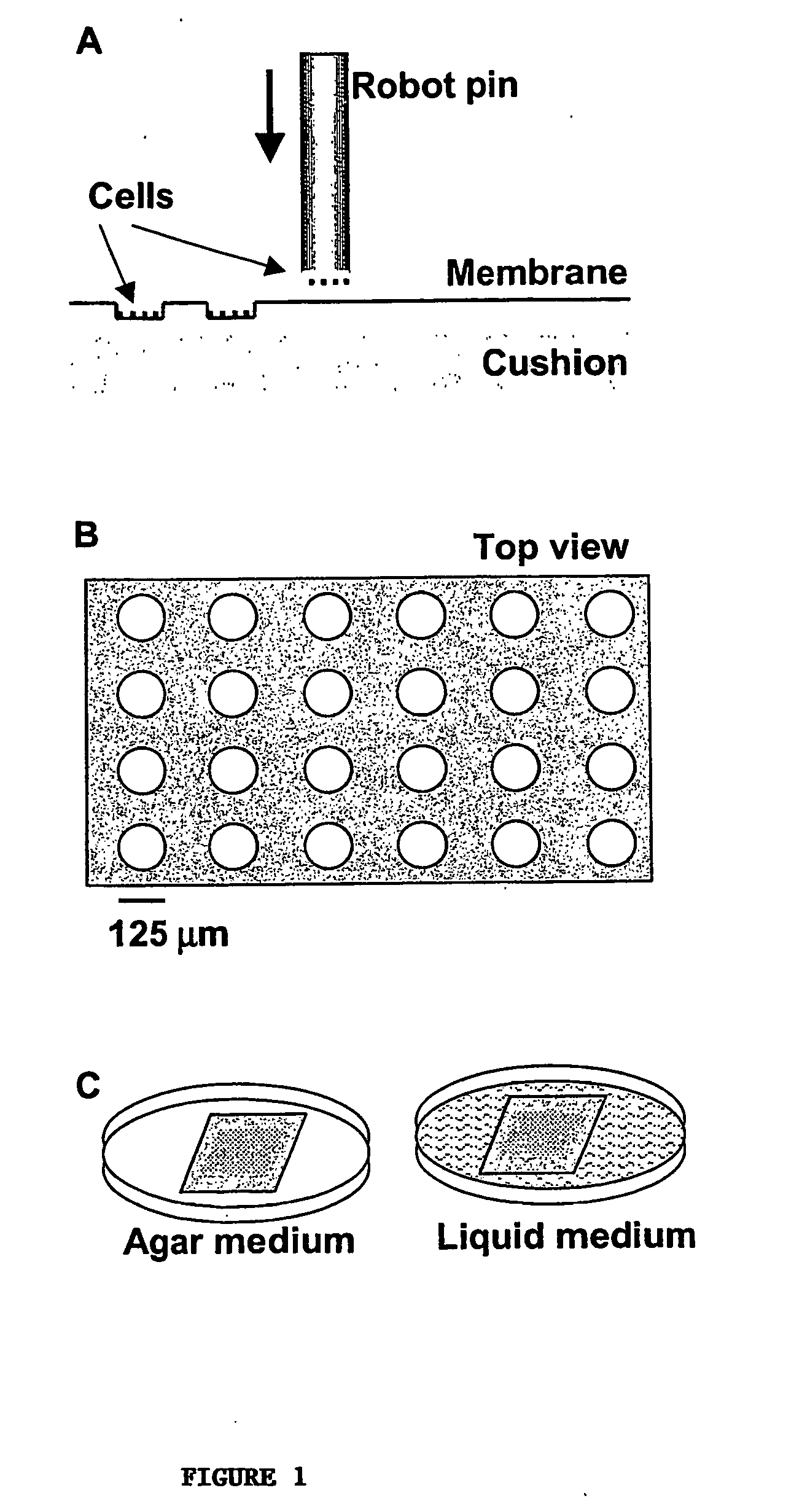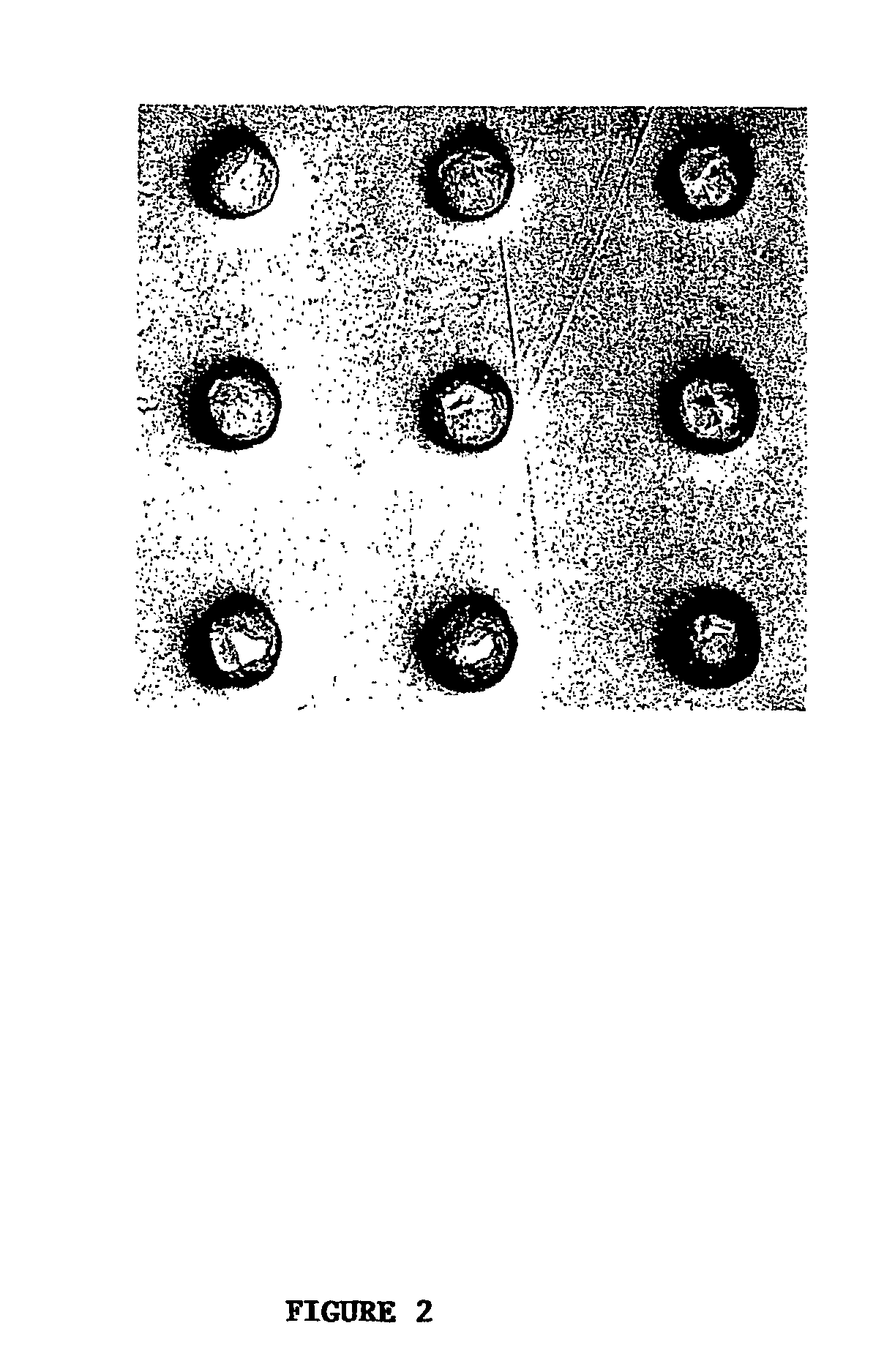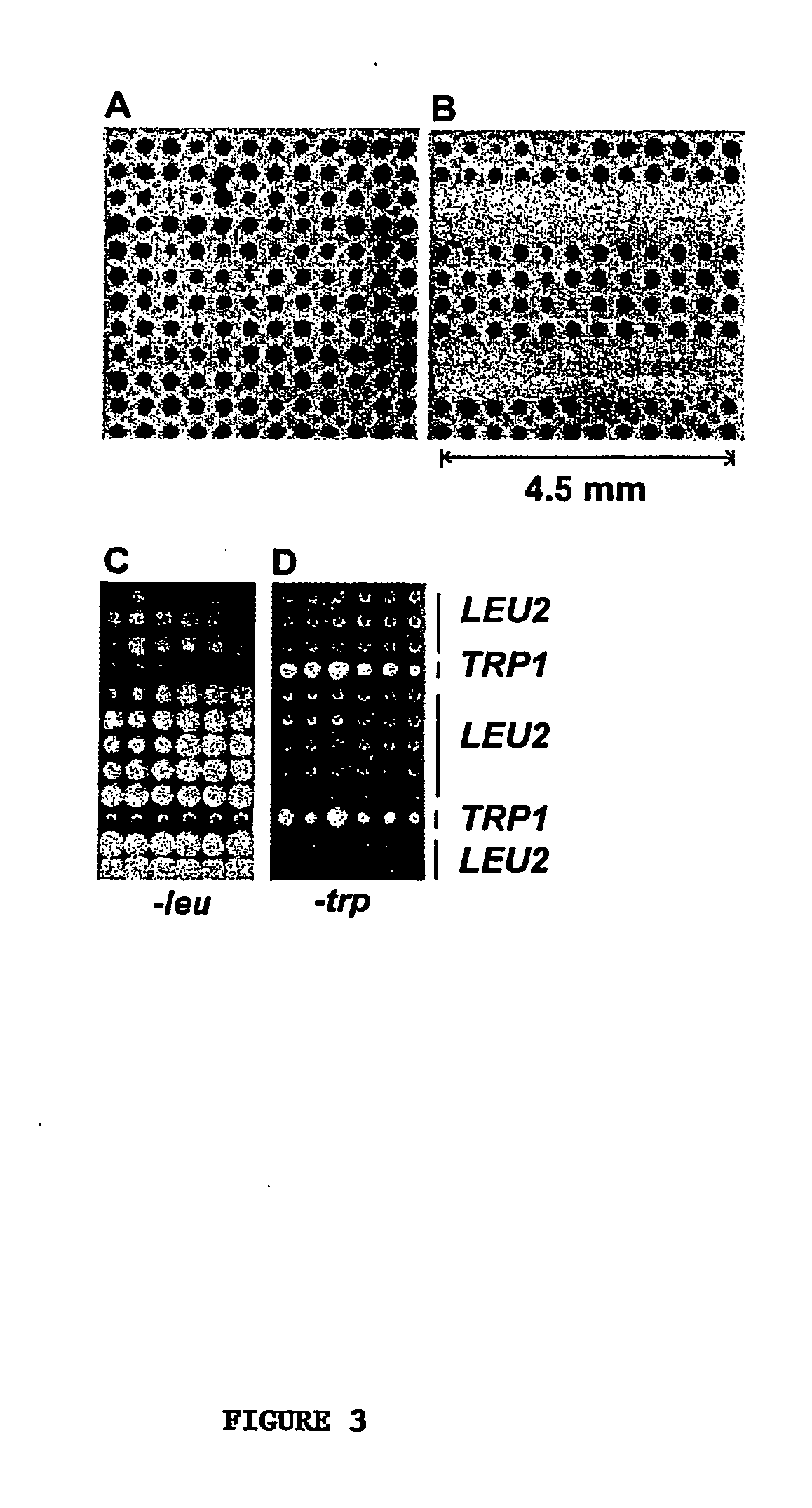High-density cell microarrays for parallel functional determinations
a high-density cell and functional determination technology, applied in the field of high-density cell microarrays, can solve the problems of difficult to achieve using conventional techniques, difficult to rapidly uncover gene regulatory circuits and functional manifestations at the cellular level, and difficult to study phenotypic manifestations
- Summary
- Abstract
- Description
- Claims
- Application Information
AI Technical Summary
Benefits of technology
Problems solved by technology
Method used
Image
Examples
example 1
Preparation of E. coli Cell Microarrays
[0041] To illustrate the coupled fabrication process, we first made cell microarrays of E. coli that express β-galactosidase. A cellulose ester membrane (Spectrum) was rinsed with and stored in deionized water at 4° C. until use. The molecular weight cut off for the membrane was 3,500 Daltons and the thickness was estimated to be 10 μm. The membrane was placed on the surface of chromatography paper (Fisher) that had been soaked in a warm 0.5% agarose solution and placed on a standard microscope slide. This cushion helped to immobilize and moisturize the membrane during the arraying process. Any bubbles or excessive agarose between the cushion and the membrane was removed by gently rubbing the membrane with a clean and smooth rod. The membrane assembly was then placed in the slide holder of a robotic arrayer (GMS417, Affymetrix).
[0042] An overnight bacterial culture was dispensed into a 96-well plate (Corning) and arrayed by the robot onto the...
example 2
Preparation of S. cerevisiae Microarrays
[0045] Using the coupled fabrication approach described in Example 1, we next developed yeast (S. cerevisiae) cell microarrays. Two-day yeast cultures (1.2 mL) in 96-tube format (VWR) were centrifuged at 3,000 rpm for 5 min. The clear supernatant was quickly decanted without perturbing the cell pellets. About 20 μL of concentrated yeast was transferred to a 96-well plate (alternatively, the yeast cells can be resuspended in YPD+15% glycerol before arraying). Yeast cultures were dispensed into a 96-well plate and arrayed using a robotic arrayer as described above.
[0046] Shown in FIGS. 3C and 3D are yeast cell microarrays of an auxotrophic strain carrying either LEU2 or TRP1 plasmids. The cell array membranes were placed onto the surface of synthetic media lacking either leucine or tryptophan and incubated at 30° C. for 12-24 hours. Yeast cells with a LEU2 plasmid grew in the medium lacking leucine while those with a TRP1 plasmid did not. Conv...
example 3
S. cerevisiae Cell Microarrays for Identifying Drug Targets
[0047] To further illustrate the utility of cell microarrays for assaying drug effects on individual gene deletions, we used a series of diploid strains carrying homozygous gene deletions of fkb1 and 93 other genes chosen at random. (Winzeler, E. A. et al. Functional characterization of the S. cerevisiae genome by gene deletion and parallel analysis. Science 285, 901-906. (1999)). FKB1 encodes FKBP12 that binds FK506 and rapamycin, two natural products used as anti-fungal and immunosuppressant drugs. The FKBP-drug complex inhibits progression through the G1 phase of the cell cycle in yeast and mammalian cells. Deletion of FKB1 has been shown to render yeast resistant to rapamycin. (Heitman, J., Movva, N. R. & Hall, M. N. Targets for cell cycle arrest by the immunosuppressant rapamycin in yeast. Science 253, 905-909. (1991); Schreiber, S. L. & Crabtree, G. R. Immunophilins, ligands, and the control of signal transduction. Ha...
PUM
| Property | Measurement | Unit |
|---|---|---|
| distance | aaaaa | aaaaa |
| distance | aaaaa | aaaaa |
| distance | aaaaa | aaaaa |
Abstract
Description
Claims
Application Information
 Login to View More
Login to View More - R&D
- Intellectual Property
- Life Sciences
- Materials
- Tech Scout
- Unparalleled Data Quality
- Higher Quality Content
- 60% Fewer Hallucinations
Browse by: Latest US Patents, China's latest patents, Technical Efficacy Thesaurus, Application Domain, Technology Topic, Popular Technical Reports.
© 2025 PatSnap. All rights reserved.Legal|Privacy policy|Modern Slavery Act Transparency Statement|Sitemap|About US| Contact US: help@patsnap.com



